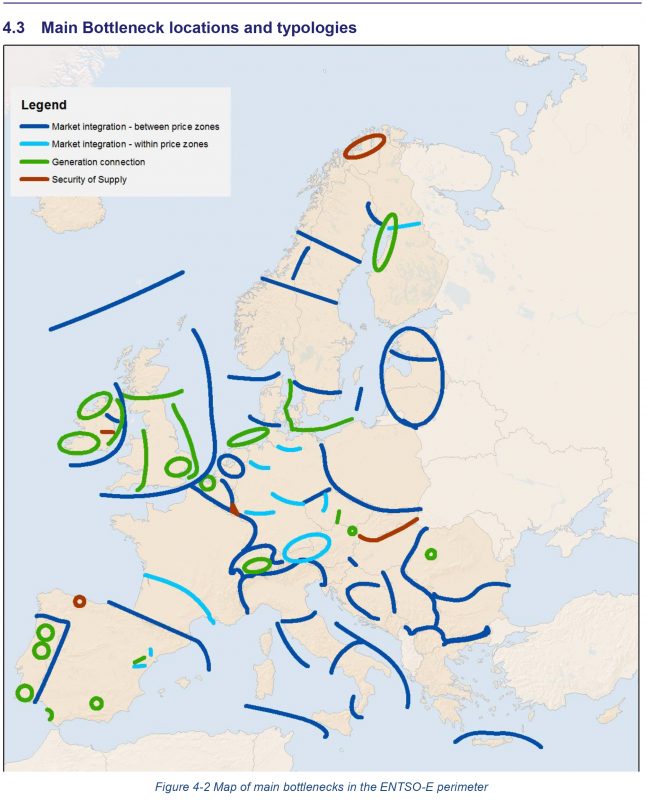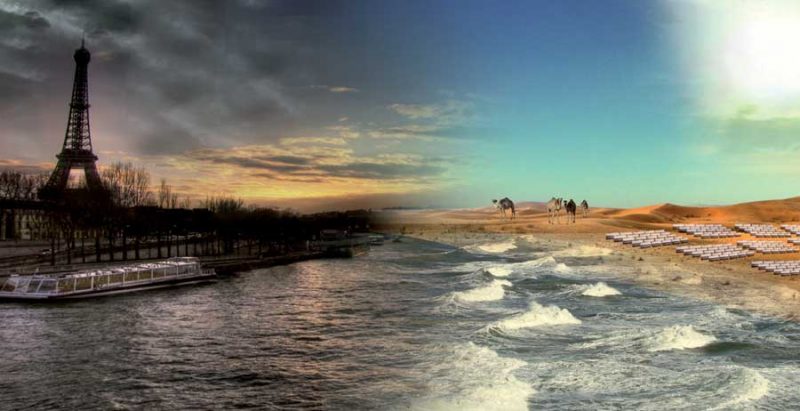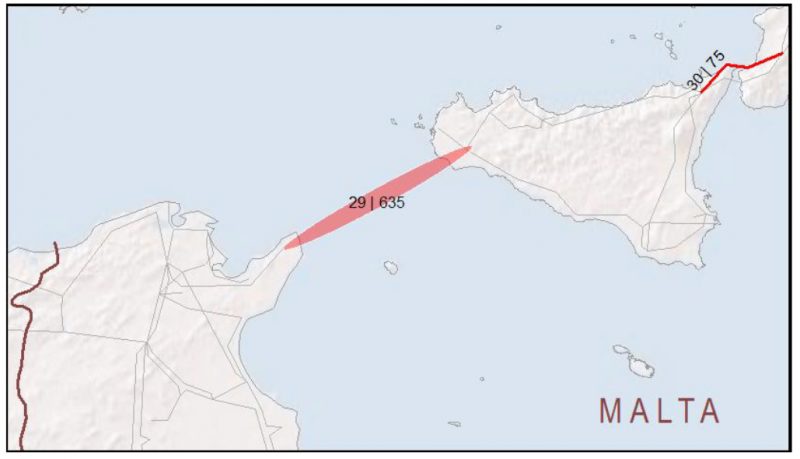On February 25, 2015, the EU acquired a new meaning: Since then this acronym not only stands for the European Union, but also for the Energy Union. Jean-Claude Juncker, who became president of the European Commission in 2014, launched a novel strategic policy focus that bears this weighty title. Energy is presented as the true force of European unification: “Energy is what binds us beyond borders” (Šefčovič and Cañete 2015). The Energy Union is expected to engender “true solidarity and trust” among the member states (European Commission 2015a:1). The Commission—the main executive body of the EU—hopes that “freely flowing” energy will create a unified Europe that acquires the strength and ability to “speak with one voice in global affairs” (European Commission 2015a:1).
On first sight, the name Energy Union might appear as just a rhetorical play on words intending to promote the energy policy of the Juncker Commission. But it is much more than that: The Energy Union is the latest incarnation of a long history of imagining Europe’s political unification through infrastructural policies. “Infrastructural Europeanism” (Schipper and Schot 2011:246) began in the years after the First World War. After the Second World War, the Coal and Steel Union was the first building block for a political unification of Europe. While hopes of infrastructural unification ebbed and flowed since then, the Treaty of Lisbon in 2009 gave a new boost to the construction of Europe by infrastructural means. For the first time, trans-European networks of energy, transport, and communication became part of the “shared competence” between the EU and its member states.
In all these different incarnations and phases, infrastructures appear to harbor a political promise. In the long history of “infrastructural Europeanism,” plans for infrastructural connectivity assume that roads, pipes, and cables help create a unity otherwise difficult to achieve given that multiple traditions, languages, and a political history of war divide the nations of Europe. Most recently, the debt crisis and the refugee crisis have provided prominent examples of the ongoing strife and division that reigns between the nation-states of Europe. In spite of these experiences or because of them, the current initiatives for trans-European networks intend to build a supranational unity through the material connectivity of infrastructures. Infrastructures promise to “make solidarity…operational” (European Union 2013:39).
But infrastructures themselves do not necessarily produce political unity. As the history of imperial rule, colonization, and globalization tells us, infrastructures may serve purposes of extraction or geopolitical control without being tied to a project of unification. For example, military bases, logistical cities, or offshore banking all rely on infrastructural connectivity, but these linkages are neither regarded nor operated as vital chains that bind a community. Infrastructures have to be built, maintained, governed, and used in a specific way to become a vehicle for creating a collective.
Europe is a rather interesting case for studying the fabrication of collectivity out of infrastructural connectivity. Different from the nation-state, Europe is lacking clearly defined territorial boundaries and a contiguous state space. Its political unity is always newly at stake, subject to experimentation and new forms of governing. Against this background, it is intriguing to look at the current infrastructure policy of Europe in terms of a collectivity in the making.
Unsurprisingly, it is impossible to understand the infrastructural collectivity of Europe apart from the language of the market. The idiom of a shared and single market functions as a key political term for negotiating and instantiating the political infrastructuralism of Europe. But the market is not a concrete term: its meaning and its material incarnations change. In the case of European infrastructuralism, the market appears in a twofold sense: it is end and means at the same time. On the one hand, the market is the means to create the common infrastructures of Europe. On the other hand, infrastructures are the means for producing the common European market. The European Commission takes the market and its infrastructural set-up to generate solidarity across a predefined political space. Yet, this solidarity is not understood to be co-extensive with the infrastructural network as a whole, which expands to other countries and regions outside of Europe. One has to look at the definitions of space and the definition of the market at the same time to understand the making of a European infrastructural collectivity.
At first sight, the link between infrastructure, the market, and Europe’s spatial-political unity appears straightforward. Infrastructures are presented as the material backbones of a market-space, which is predefined in political and geographical terms. The regulations and communications of the EU envision a “Union-wide” and “pan-European” physical grid that ends the “isolation” of member states and leaves no “energy islands.” Such a grid should make it possible to sell and to buy energy “from any source…anywhere in the EU, regardless of national boundaries” (European Commission 2011:13). We are confronted with a form of infrastructural unity that looks, to some extent, like a state writ large: The “pan-European” grid is thought of as a “connective tissue” (Edwards 2003) permeating the territories of its member states. The European Commission hopes to bring about internal cohesion through a contiguous and continuous connectivity of freely flowing energy.
To achieve such a physically defined geo-economy, certain market actors have a specific political role in the process of unification. In the most recent past, EU regulations put a strong emphasis on the transmission system operators (TSOs) that build and manage infrastructures for commercial gain. These enterprising entities recover their incurred costs through tariffs from network users (European Commission 2013:54). EU regulations delegate the public planning of the “pan-European” physical grid to the TSOs. Many have criticized this intermingling of commercial interest with the political role of devising the Ten-Year-Network Development Plan (TYNDP). Even subdivisions of the European governing bodies, such as the Committee on Industry, Research and Energy, which reports to the European Parliament, points at the predominant role of TSOs and project promoters and asks the Commission to ensure that assessments of economic, social, and environmental impacts are not influenced by commercial interests (European Parliament 2015:6).
The task of the European consortium of national TSOs is to conduct integrated market and network modeling to designate the “bottlenecks” of European integration. As a corollary report to the European planning process by the consultants of PricewaterhouseCoopers acknowledges, the notion of the “bottleneck” is a hybrid and normative term: “[B]ottleneck is not usually a blockage…it is a degradation in quality of service relative to some norm. What the norm is can often be a matter of judgment” (PricewaterhouseCoopers 2011:79). The norms that guide the definitions of “bottlenecks” amalgamate different concerns: unification of price zones and competition, increase of cross-border flows, integration of renewable energy, and the security of supply. They signal the need to improve connectivity across a geographical space. More than half (60%) of the 100 bottlenecks that the TYNDP (European Network of Transmission System Operators for Electricity (ENTSO-E) 2014:62) defines are associated with market integration, 30% with the integration of renewables. Interestingly, the integrated network and market modeling maps the space of the common market onto a contiguous geography that ignores not only the boundaries between European states, but at certain points also the boundaries between European members and non-members. As Figure 1 indicates, viewed through the lens of the Energy Union, Switzerland is as much a part of pan-Europe as is Tunisia, and bottlenecks between these borders need to be removed.

Figure 1: Main Bottleneck Locations and Typologies.
Yet the spatiality of infrastructural Europeanism is not fully captured by such a vision of a geographical market space. It conjoins a presumed geographical unity of Europe with an unbound topology of a highly fragmented common. We use the notion of topology to draw attention to the fact that infrastructural spaces are network spaces: they result from the particular relations forged by the pipelines, grids, and storage facilities. Whereas a geographical image of the common market presents us with a continuous and contiguous space, a topological understanding of space requires us to look specifically at how the grid is designed. Several factors are important in planning the grid. First of all, fundamental decisions about energy production shape the grid. For example, planning the infrastructural grid involves assumptions about desirable degrees of centralization or decentralization in energy generation. Infrastructures determine how sites of energy extraction are linked to sites of energy use. In addition, infrastructural connections entail definitions of borders and integration. They modulate the very contours of Europe’s infrastructural space.
With regard to the topological dimension of Europe’s infrastructural space, two aspects are particularly noteworthy: the first concerns the prioritization of physical connections that befit large and highly specialized sites of energy production; the second pertains to the status of borders within such an infrastructural vision of collectivity. Both taken together introduce a significant degree of unevenness into Europe’s spatial constitution.
Highly indicative of the tension at the core of Europe’s spatial order forged by infrastructural projects are so-called Projects of Common Interest (PCI). This category was introduced in the EU Regulation on Trans-European Energy Infrastructures (European Union 2013). Projects of common interest serve the implementation of “strategic trans-European energy infrastructure priorities” (European Union 2013:41). Although the PCIs are subjected to cost-benefit analysis and have to pass the test of market modeling, energy infrastructure projects become PCIs if they also serve a “wider European benefit,” such as “market integration,” “sustainability,” or the “security of supply” in the case of electricity networks, or if they have “positive externalities” such as “security of supply, solidarity or innovation” (European Union 2013:47, 57). Selected on the basis of such criteria, PCIs benefit from simplified permitting procedures and could have access to public funding under the Connecting Europe Facility (CEF) or the European Fund for Strategic Investment (EFSI).
Interestingly, to become part of the Union-wide list of “common interest,” projects do not necessarily have to traverse political borders. Technological connectivity can also possess a genuinely European quality if it is located in the territory of one member state only. One pertinent criterion for determining such PCIs within a country is the amount of voltage that a transmission line can bear. Only “high-voltage overhead transmissions lines” that change the “grid transfer capacity by at least 500 Megawatt” or projects that provides annual storage of 250 gigawatt-hours per year can belong to the “Union-wide list” of PCIs (European Union 2013:68).
The European importance of “high-capacity electricity highways” (European Commission 2013:6) results from the definition of so-called “priority thematic areas.” The Energy Union requires a “high voltage grid” that can deal with “larger, more volatile power flows over larger distances across Europe” (ENTSO-E 2014:10). This is due to the assumption that “a significant share of generation capacities will be concentrated in locations further away from the major centers of consumption or storage”, such as “offshore installations, …ground-mounted solar and wind farms in Southern Europe or biomass installations in Central and Eastern Europe” (European Commission 2011:9). The “electricity highways” should accommodate wind and solar surplus generation in the North and Baltic seas as well as in southern Europe and northern Africa. Furthermore, “new generation hubs” and new major storage capacities in the Nordic countries and the Alps need to be linked with major consumption centers (European Union 2013:63).

Figure 2: Topological Europe.
The visual presentation of the Roadmap 2050, a project commissioned by the European Climate Foundation, pushes this topological coding of space a step further. It entails a montage produced by Rem Kohlhaas that depicts Paris as adjacent to the African desert (Figure 2). The image shows solar panels that capture the abundant energy in the Sahara to satisfy the demand in cities with iconic buildings and cloudy skies. This is not just the fantasy of an architectural firm; the EU itself has persistently aimed at linking large centers of energy generation “outside its territory” to the European networks, among them “northern African renewable energy sources” (European Commission 2011:13). Desertec, a large-scale project supported by a consortium of investors and planners, has probably been the most prominent initiative in this respect. Despite the fact that by the end of 2014 the vast majority of shareholders has withdrawn from the consortium and even though the most recent European documents are more hesitant in depicting northern African countries as energy sources, the latest TYNDP still lists a “new interconnection between Italy and North Africa to be realized through an HVDC submarine cable (ENTSO-E: 2014:272). In terms of infrastructure, Europe displaces its boundaries between inside and outside by forging differing degrees of connectedness (Figure 3).

Figure 3: Project for a new interconnection between Italy and North Africa.
Other attempts to further European connectivity beyond its political orders point to the southeast. In April 2015, Europe’s continental synchronous grid was extended to Turkey. Reiterating the agenda of infrastructural Europeanism, Konstantin Staschus, secretary of the European consortium of TSOs, considered this not merely a technological achievement: “If there is no interconnection nothing can be done on integration from the political side of things or the markets. Electricity interconnection is the foundation for integration” (ENTSO-E 2015). The fact that network topologies are per se expandable thus seems to keep Europe from being spatially self-contained. While the latest infrastructure policy of the Juncker Commission clearly seeks to advance Europe’s territorial cohesion by setting new “interconnection targets” between member states, by designing a new European Fund for Strategic Investments, and by defragmenting internal energy markets, the EU self-consciously declares at the same time that “the Energy Union is not an inward looking project” (European Commission 2015a:6). Instead, it “extends…beyond EU borders” (European Commission 2015b:12).
Europe is a moving target, not only because it has moving borders. The European common is an object of constant recalibration through commentary, proposals, regulations, and planning. The analysis we provide here should be understood as a snapshot of the European attempt to turn infrastructural connectivity into a new form of collectivity. European infrastructures are key sites where diverse political issues intermingle: the ecological with the geopolitical, the fabrication of a common with economic concerns. The analytical challenge, however, lies in recovering the political choices from the stubborn materiality of infrastructure and the dusty archive of regulatory literature connected to it. We have demonstrated that Europe has committed itself in a peculiar way to the idea of rendering a pan-European solidarity operational through trans-European networks. It envisions itself as what might be termed an “operative community,” a form of political collectivity whose infrastructural connectivity furthers the common market and constitutes a space which combines both topographical and topological features.
